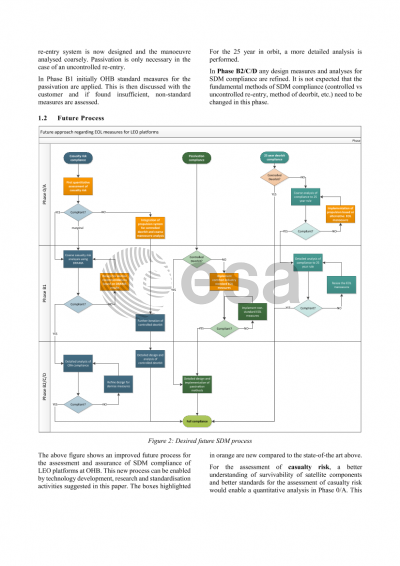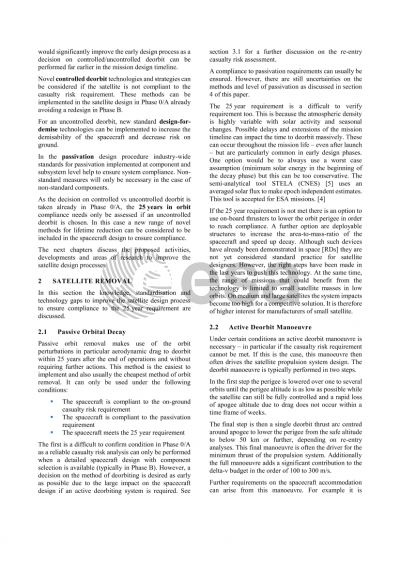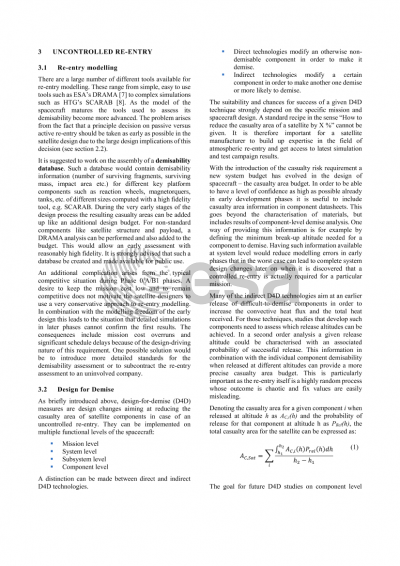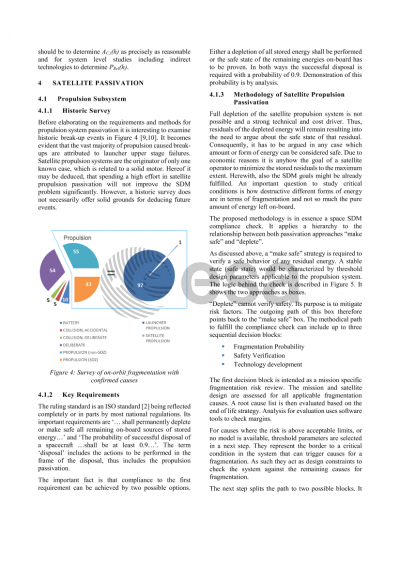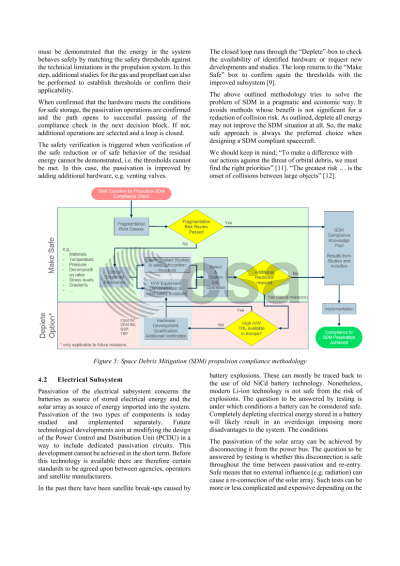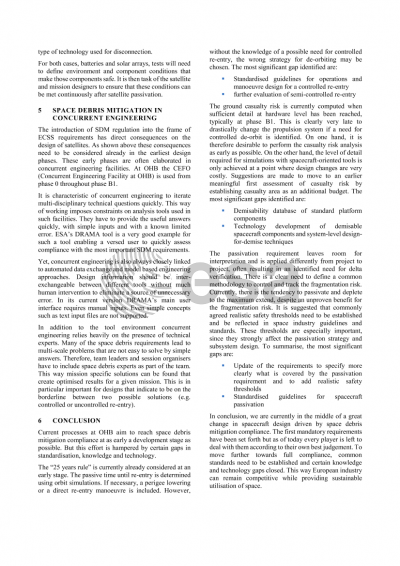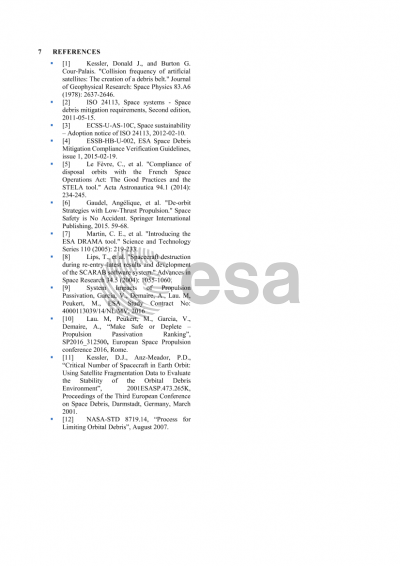Document details

Abstract
In the early phases of a satellite design project, there are still a lot of uncertainties in dealing with Space Debris Mitigation (SDM) regulations. Requirements on space debris mitigation (in particular the implementation of ISO 24113) is a driver for the spacecraft design. The following requirements specifically pose a challenge to to manufacturers of medium and large LEO satellites:
- Requirement for removal from protected region within 25 years
- Requirement on maximum ground casualty risk
- Requirement for passivation of on-board energy
In the past, these issues did often not receive sufficient attention (or were even not considered) in the early definition phase leading in some cases to significant system modifications and resulting development costs later in the project.
The “25 years rule” is currently already considered at an early stage. The passive time until re-entry is determined using orbit simulations. If necessary, a perigee lowering or a direct re-entry manoeuvre is included. However, without the knowledge of a possible need for controlled re-entry, the wrong strategy for de-orbiting may be chosen.
The ground casualty risk is currently computed when sufficient detail at hardware level has been reached, typically at phase B1. This is clearly very late to drastically change the propulsion system if a need for controlled de-orbit is identified. On one hand, it is therefore desirable to perform the casualty risk analysis as early as possible. On the other hand, the level of detail required for simulations with spacecraft-oriented tools is only achieved at a point where design changes are very costly. Suggestions are made to move to an earlier meaningful first assessment of casualty risk by establishing casualty area as an additional budget and creating a database of re-entry characteristics for standard spacecraft components.
The passivation requirement leaves room for interpretation and is applied differently from project to project, often resulting in an identified need for delta verification. There is a clear need to define a common methodology to control and track the fragmentation risk. Currently, there is the tendency to passivate and deplete to the maximum extend, despite an unproven benefit for the fragmentation risk. It is suggested that commonly agreed realistic safety thresholds need to be established and be reflected in space industry guidelines and standards. These thresholds are especially important, since they strongly affect the passivation strategy and subsystem design.
This paper aims to summarise the current processes in place to deal with space debris mitigation requirement compliance for LEO satellites and highlight the areas with potential for improvement. The overarching goal is to allow an early needs assessment for the mission by filling identified gaps in knowledge, tools and standardisation. A specific aspect discussed in the paper is how to integrate early SDM planning in concurrent engineering processes. In particular, a very early evaluation of casualty risk will be beneficial as it is a driving factor for the design of the propulsion system.
Preview


